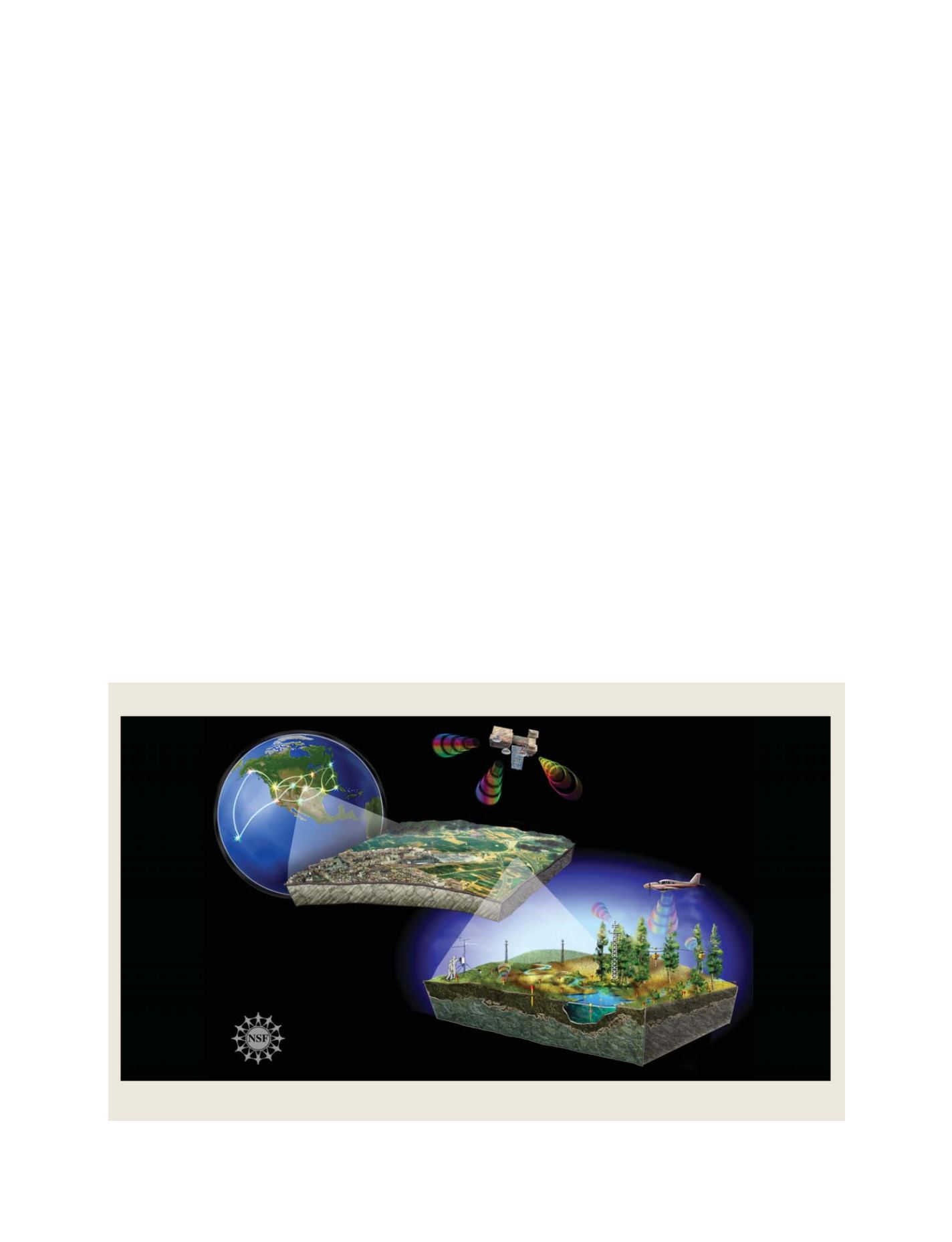

[
] 89
observing stations began operation: the Hawaii Ocean
Time-series (HOT) and Bermuda Atlantic Time-series
Study (BATS) sites. Data fromHOT and BATS continue to
provide information about the effects of global warming
and greenhouse gases on the seas. LTER, HOT, BATS and
other ongoing environmental observing programs have
led the way for new NSF observing networks for research.
NSF-supported environmental observing systems for
the land
Among the most recent NSF Earth observing projects, the
National Ecological Observatory Network (NEON) is an
initiative to develop North American continent-spanning,
land-based research infrastructure for ecological obser-
vations and experiments. NEON will provide data for
research on processes at all spatial scales, time scales, and
levels of biological organization, from regions, to local
ecosystems, to microbes. It will also give scientists new
ways of answering questions such as: How important is
biodiversity in being able to predict human impacts on
ecosystems? How do large-scale processes such as El Niño
affect regional drought and carbon cycles?
Fixed sensors and towers, mobile suites of instru-
ments, rapid deployment systems placed on vehicles,
and airborne observation capabilities will give NEON
scientists the basic information to develop and validate
models that can be used to predict the effects of climate
change. Effects including increased droughts and wild-
fires, the spread of invasive species, and infectious
disease outbreaks.
NSF-sponsored observing platforms emphasize connectedness
with these systems by providing scientists with a means of under-
standing the underlying dynamics of each of Earth’s complex
systems. That knowledge is then used by other federal agencies.
NSF-funded observing networks support these agencies’ missions
and improve our ability to understand coupled biological and phys-
ical systems in ways that will allow us to forecast disasters like the
December, 2004, Indian Ocean tsunami and 2005 US hurricanes.
This predictive power can help prevent loss of life and improve our
ability to manage resources in a sustainable way.
The first NSF environmental observing networks
Among the earliest environmental observing efforts to receive NSF
support was the Long-Term Ecological Research (LTER) network. It
was established in 1980 at six locations with the aim of enhancing
our understanding of long-term patterns and processes in ecosys-
tems. Now 26 LTER sites span the range of global ecosystems, from
dry valleys in Antarctica to tundra in Alaska, from coral reefs in Tahiti
to forests in New Hampshire. Long-term ecological research has given
insight into the most basic of Earth’s functions, such as how ecosys-
tems with greater plant biodiversity are better able to withstand and
recover from droughts, insect pests, and disease outbreaks.
Most LTER sites originally focused on ‘pristine’ environments,
which is to say those with no or minimal human interference.
However, it was decided that finding out how people interact with
these natural settings is growing in importance. As a result, two
urban LTER sites, in Baltimore, Maryland and Phoenix, Arizona as
well as a row crop agricultural site in Michigan were set up.
Eight years after the initial LTER sites, marine scientists created an
LTER equivalent in the oceans. In 1988, two long-term open ocean
NSF National Ecological Observatory Network (NEON): Opening new horizons in the science of large-scale ecology
NSF research is a key component in the creation of a Global Earth Observation System of Systems
Source: National Science Foundation/National Ecological Observatory Network
GEOSS C
OMPONENTS
– O
BSERVING
S
YSTEMS
















